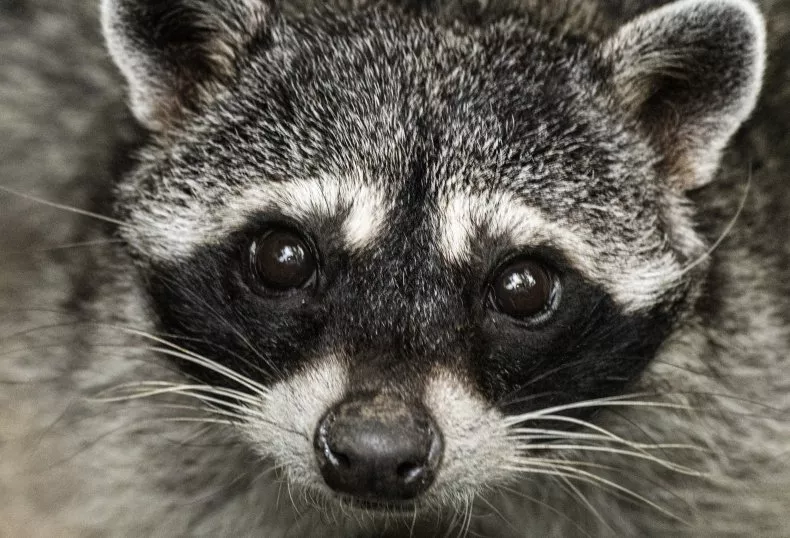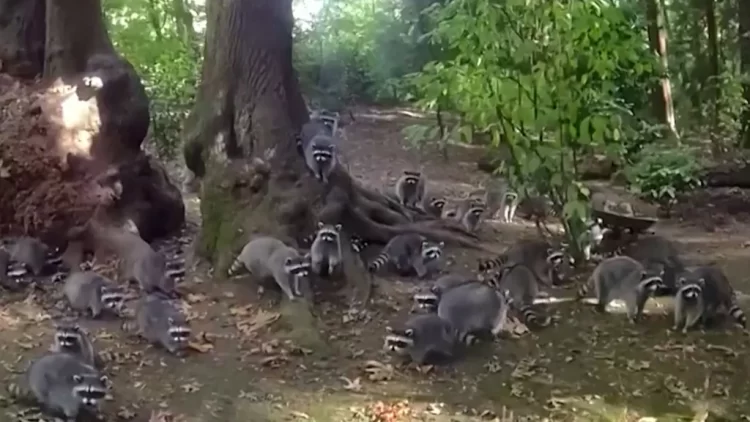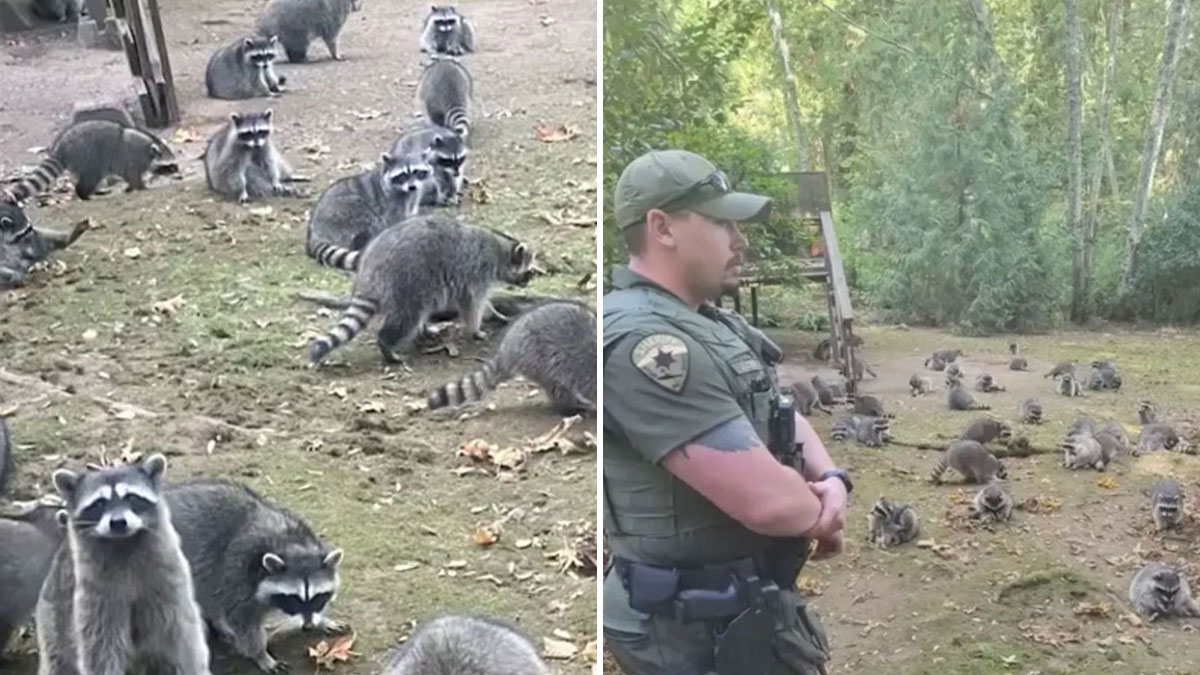You know how we’re always told not to feed the wildlife? especially raccoons Well, one Washington woman found out the hard way that wild animals don’t exactly RSVP when invited to dinner—especially when that dinner is on a never-ending loop.
A Poulsbo resident had been feeding a small family of raccoons for over 35 years. It was a cute little routine—until the cute stopped and the chaos began. What started as a handful of critters showing up for snacks turned into a full-blown raccoon army, numbering nearly 100 strong. Yep, you read that right—100 raccoons.
Before long, these furry freeloaders weren’t just hanging around for the food. They began taking over her entire property, showing up night and day, demanding food like entitled houseguests who don’t know when to leave.
When Raccoons Become Regulars

It’s easy to see how this got out of hand. What began as a small group of raccoons looking for food became a full-blown infestation as the word spread in the raccoon community about the unlimited buffet. Every day, more and more raccoons swarmed her house, scratching at her door, surrounding her car, and pretty much setting up camp.
Kevin McCarty, a spokesperson for the local sheriff’s office, described the situation:
“They saw this as a food source now, so they kept coming back to it and kept expecting food. This is a nuisance problem kind of of her own making that she has to deal with.”
And deal with it, she did—but not before things reached a tipping point.
The 911 Raccoon Rescue
Things got so bad that she had no choice but to call the police. Imagine the scene: You step out of your house, and a hundred raccoons are there, staring you down. If you didn’t know better, you might think you wandered into some alternate universe where raccoons rule the land.
The police arrived at her home, and even they were stunned. They had never seen anything like it. This wasn’t a couple of critters rummaging through trash bins—this was a raccoon invasion.
And just like that, the situation went viral. The Kitsap County Sheriff’s Office posted a video of the incident to Facebook, showing the army of raccoons casually strolling around the woman’s yard as if they owned the place. The video racked up views and comments, with people weighing in on the spectacle.
The Dangers of Feeding Wildlife
Feeding wildlife might seem harmless—adorable even. But this situation shows just how quickly things can spiral out of control when animals become dependent on humans for food. Raccoons, though typically shy and nocturnal, can become aggressive when they expect to be fed, as this woman found out the hard way.
Wildlife experts have been very clear: feeding wild animals is a bad idea. Here’s why:
- Dependency: Once animals associate your home with food, they won’t stop coming. They’ll keep returning, bringing friends, and eventually, they’ll start to expect it.
- Aggression: Like this woman experienced, wild animals can get aggressive if they don’t get what they want. They’ll scratch, surround you, and won’t take no for an answer.
- Disease Transmission: Raccoons can carry diseases like rabies and roundworms. The more raccoons hanging around, the greater the risk of disease spreading to humans or pets.
- Unwanted Guests: It’s not just raccoons. Feeding any wild animals can attract predators like bears or coyotes, turning your backyard into a full-on wildlife hotspot.
As Kevin McCarty explained: “It’s pretty simple: don’t feed wild animals. When wild animals have a reliable food source, they’re going to keep coming back to it.”
Learning the Hard Way

Once the woman stopped feeding the raccoons, the massive crowd began to thin out. She could finally leave her house without fear of being surrounded by an army of hungry critters.
Authorities hope she’s learned her lesson. Feeding raccoons might have seemed harmless at first, but it quickly spiraled out of control, causing a headache for both her and the local police. Plus, the health risks of feeding wild animals are nothing to take lightly.
What Can We Learn from This?
The takeaway? Feeding wildlife is never a good idea. Sure, it might seem fun to feed a cute raccoon or two, but once you open the floodgates, you can’t control what comes through. This story is a perfect example of what happens when well-meaning actions lead to unintended consequences.
If you’re tempted to feed the wildlife, just don’t. Your backyard doesn’t need to become a real-life “Animal Kingdom” episode.
What to Do if You’re Facing a Wildlife Problem
So, what do you do if you find yourself dealing with an unexpected animal invasion? Here are some tips:
- Stop feeding the animals: The first step is obvious—stop feeding them! Without food, they’ll eventually lose interest in your property.
- Call wildlife control: If the problem persists, contact your local wildlife control or state wildlife department. They can help safely relocate the animals.
- Secure your trash: One of the biggest attractants for wild animals is food scraps left in unsecured garbage bins. Make sure your trash is locked down tight.
- Use deterrents: Motion-activated sprinklers or lights can help scare animals away without causing harm.
Protect Your Property
Don’t let your good intentions get the better of you! Wildlife doesn’t need a free meal, and your property definitely doesn’t need an army of raccoons. Take steps now to prevent unwanted guests from making themselves at home in your yard.
If you’re dealing with wildlife problems or just curious about how to keep your space critter-free, reach out to your local wildlife department for expert advice and tips on how to coexist with animals without inviting them in for dinner.

